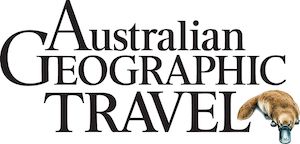Itinerary
Tour day-by-day
-

Day 1: Daintree & Cape Tribulation
Pick up will commence from your individual Cairns hotel from 6.30am. Please advise your hotel so we can arrange your pick up. Alternatively, our friendly team can recommend a hotel for you to stay in Cairns. A trip to the Daintree isn't complete without a visit to the famous beach where the 'rainforest meets the reef'. This valley resembles a giant amphitheatre with a semicircle of hills dominated by Mt Sorrow (850m) and Mt Hemmant (1000m).
The south-eastern rainfall trapped by this valley results in a lush tropical climate with high temperatures, humidity and rainfall. Renowned for its scenic landscape, remote beaches and wildlife viewing opportunities! Several mangrove and rainforest boardwalks are available to allow us the maximum opportunity to observe birds. Cape Tribulation is one of the best spots to obverse the iconic southern cassowary as well as the leaden flycatcher, yellow-breasted boatbill, pied monarch, wompoo fruit dove, shining flycatcher, azure kingfisher, Pacific heron, white-bellied sea-eagle and little shrike thrush.
The afternoon will be spent exploring the surroundings of Kingfisher Park, our accommodation for the next two evenings. Kingfisher Park Birdwatchers Lodge is a small, family-run business set in an internationally renowned sanctuary. The lodge offers accommodation to birdwatchers and nature lovers from mid April to mid January. The property is owned and operated by professional guides and naturalists Carol and Andrew Iles, who have worked in the area since 1999. Set in Tropical Far North Queensland, one of the best birding areas in Australia, the lodge is especially famous for its population of breeding buff-breasted paradise kingfisher, which are found in the grounds between November and April.
There are many resident birds at the lodge including noisy pitta, red-browed finch, Macleay's, yellow-spotted and graceful honeyeaters, pale-yellow robin, little shrike-thrush, yellow-breasted boatbill, black-faced & spectacled monarch, cicadabird and spotted catbird. The lodge is a Land for Wildlife sanctuary with good populations of birds, mammals, reptiles and plants.
Around 230 bird species have been recorded within a 1.5 km radius of the lodge and its grounds and all of the 13 Wet Tropics endemic birds can be found within a 15km travel distance. The lodge is also famous for the red-necked crake, which can often be seen down near the creek or Crake Pond, and the pale-vented bush hen, which can be found near any long grass in the area. It also has a resident platypus in the stream at the bottom of the property.
-

Day 2: Daintree, Julatten and Mt Lewis
Breakfast is provided this morning at the lodge. This is one of the best examples of a tropical river with rainforest growing right to the water's edge, and provides some great birding. The river is most famous for the great-billed heron and little kingfisher. The heron is one of the world's largest. Up until 20 years ago it was rarely seen. Once birding tours commenced on the river, exploring the small rainforest and mangrove creeks that ran from it, the bird was seen more regularly. Even now, however, it remains elusive and can melt into the shadows of the rainforest or mangroves right before your eyes.
A pre-dawn cruise will provide the best conditions for those wishing to see the river at its most stunning, as well as the greatest chance to see some of the most sought-after birds of the river. Referred to in many birding reference books, this famous cruise has been the highlight for many birdwatching enthusiasts in Far North Queensland.
Key target species include great-billed heron, Papuan frogmouth, little kingfisher, azure kingfisher, black bittern, saltwater crocodile, green tree snake, water dragon and butterflies. The afternoon will be spent exploring the area of Mt Lewis. A 30-minute drive from the lodge is perhaps the best place in Australia to see the magnificent blue-faced parrot finches, which can be found during the wet season months from November to April.
The mountain is also a great place to see Victoria's rifiebird, bower's shrike-thrush, bridled and Lewin's honeyeaters, mountain thornbill, topknot pigeon, brown cuckoo-dove, wompoo and superb fruit-doves. Optional spotlighting Spotlighting can also be very rewarding with barking, sooty (lesser) and barn owls, Papuan frogmouths are usually heard calling, and Boyd's forest dragons and northern leaf-tailed geckoes are also common. Keep an eye out for stripped and green ring-tailed possums, white-tailed tree rats and long-nosed and northern brown bandicoots.
-

Day 3: Shared Earth Reserve
Breakfast is provided this morning at the lodge. Checking out of the lodge, we move on toward the Atherton Tablelands. On this tour you will have exclusive access to the Forever Wild Shared Earth Reserve. Forever Wild work to protect Earth's last great wildernesses for societal wellbeing, for biological diversity and its evolutionary potential, for our cultural record and economic values.
The reserve encompasses 5000 acres of lagoons, trails, bird hides, permanent lakes, swamps, billabongs and creeks, including an incredible mosaic of old-growth savannah woodland. The site is incredibly diverse, and the property has some of the highest avian diversity anywhere in Australia. Boasting over 220 recorded species, the reserve's highest bird count in a single day is 98 species. We know the property is critical habitat for buff-breasted button quail, one of the world's rarest birds, and there is a healthy population of the endangered northern quoll.
The diverse range of birdlife and wildlife include quails, magpie geese, black swans, 11 different duck species and three different grebes, darters and cormorants, pelicans, crakes, rails, swamphens, moorhens, coots, herons, egrets, bitterns, ibis, spoonbills, storks (jabiru), brolgas, sarus cranes, bustards, sandpipers, godwits, common greenshanks, stints, jacanas, which thrive on waterlilies, curlews, stills, avocets, lapwings, plovers, dotterels and terns. Both the laughing kookaburra and blue-winged kookaburra are regularly seen. Bee-eaters, dollarbirds, tree creepers and pardalotes are well represented as well as numerous honeyeaters, robins, thrushes, monarchs, flycatchers and wagtails are seen throughout the wetlands.
-

Day 4: Atherton Tablelands, Hasties Swamp and Mt Hypipamee
Breakfast is provided this morning at the lodge. The Atherton Tablelands is the high-altitude counterpart of the coastal Daintree Rainforest, and offer freshwater creek trails and walking tracks into mesophyll vine forest and outstanding remnants of the regions volcanic history. Hasties Swamp is a large seasonal wetland renowned for its diverse range of resident and migratory birds.
More than 220 species have been identified and a large bird hide, with informative identification signs, offers excellent waterbird viewing opportunities. One of the highlights of the Atherton Tablelands is Mount Hypipamee National Park, which is one of the best places to see the magnificent male golden bowerbird that has bowers in the area. It's also a great place for spotting southern cassowaries.
Other birds that can be found in the general area are eastern spinebill, grey-headed and pale-yellow robins, Lewin's and bridled honeyeaters, chowchillas, spotted catbirds and tooth-billed bowerbirds. Mount Hypipamee is also great for spotlighting. We have encountered green ringtail, Herbert River ringtail, Lemuroid ringtail and brushtail possums here; Lumholtz tree kangaroos too if you're lucky!
-

Day 5: Crater Lakes & Yungaburra
Breakfast is provided this morning at the lodge. Lake Barrine and Yungaburra are outstanding locations to visit for all nature lovers. Several walks are available offering great wildlife and bird-watching opportunities. From 30 minutes to two hours, they're tailored to our target species of the day. These include tooth-billed bowerbird, spotted catbird, Victoria's riflebird, double-eyed fig-parrot, Australian king parrot, white-throated treecreeper, yellow-throated scrubwren, eastern spinebill, Lewin's, bridled, dusky, scarlet, brown and Macleay's honeyeaters, chowchilla, eastern whipbird, black-faced, white-bellied and barred cuckoo-shrikes, pale-yellow and grey-headed robins, black-faced and spectacled monarchs and grey fantail.
Peterson Creek Wildlife & Botanical Walking Track is located in the heart of Yungaburra where we may be able to view platypus or the rare Lumholtz tree-kangaroo. This afternoon we make our way back to Cairns where you will depart. Why not stay longer in the tropics and have some time to explore, ask our friendly team for suggestions.
Terms & Conditions
*Price per person, quoted in AUD, based on double occupancy. $4,290 for Single. Price includes 4 nights accommodation as per itinerary, meals included: morning tea while on tour, 4 x breakfasts, 5 x lunches, 4 x dinners, modern, comfortable, air-conditioned vehicle, passionate interpretive guide throughout days 1–5, pre-dawn cruise on day 2, access to Forever Wild Shared Earth Reserve on day 3.Why Australian Geographic Travel?
For nearly 40 years, our adventurers, photographers, writers and filmmakers have travelled Australia, bringing to life the stories of our country. Australian Geographic Travel grew from this legacy and invites you to enjoy the special places we've uncovered and meet the wonderful Australians who are inextricably part of them.

Unique Itineraries & Access
Australian Geographic Travel offers a range of unique itineraries carefully crafted by our travel specialists. Our small group tours specialise in hard-to-reach places. By travelling with us you'll have access to private land or reserves for wildlife and nature viewing that is usually inaccessible to the public.
Explore with Experts
Incorporated in our trips are highly engaging nature and wildlife experiences that support local conservation efforts, including ethical wildlife encounters, multi-day nature walks, hands-on conservation activities and more.
Meet Like Minded People
You'll join similarly inclined souls who share your taste for exploration and a burning desire to learn more about our phenomenal natural world. By travelling in small groups, you'll enjoy opportunities to make new friends – bond around a campfire, an incredible bird-spotting experience, an epic hike or a breathtaking vista. It's the shared stories that bring people together and create unforgettable memories.
Give Back
100% of the profits of Australian Geographic Travel are donated to the Australian Geographic Society and used to support scientific and environmental research, conservation, community projects and Australian exploration and adventure.
Media Gallery
-

Murray River Houseboat Safari - Wildlife Adventure on Water
From $3,310 AUD
4 days/3 nights - Australian Geographic Travel Departure
Available months: April to April, October to November.
-

Island Birds & Whalesharks or Humpbacks Ningaloo
From $5,900 AUD
7 days/6 nights - Australian Geographic Travel Departure
Available months: April to April, June to June, August to August.
-

Southern Eyre Peninsula Birdwatching - Small Group Tour
From $1,790 AUD
3 days/2 nights - Australian Geographic Travel Departure
Available months: October to November.

 We have developed this exclusive group itinerary with our Australian travel specialist, Australian Geographic Travel. To book this trip or for more information about additional departure options, please fill out the enquiry form. This will be forwarded to one of their expert consultants who will contact you as soon as possible.
We have developed this exclusive group itinerary with our Australian travel specialist, Australian Geographic Travel. To book this trip or for more information about additional departure options, please fill out the enquiry form. This will be forwarded to one of their expert consultants who will contact you as soon as possible. 










